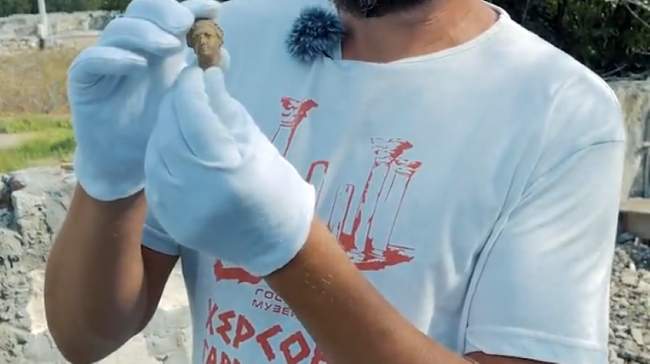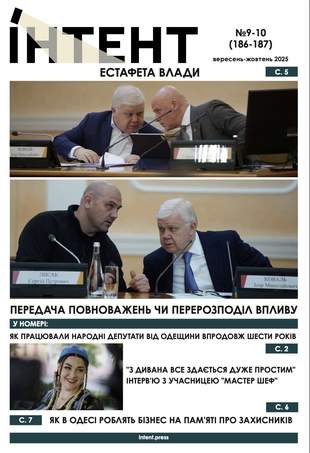Меню
Social networks
Sections
Nov. 1, 2024, 11:26 a.m.
In Crimea, the occupiers seem to have dug up statues of ancient gods
Цей матеріал також доступний українською654

Photo: occupation media screengrab
The occupiers reported a discovery made on the territory of ancient Chersonese. These are parts of terracotta statuettes - according to the so-called archaeologists, images of ancient deities.
According to Holos Kryma, the findings were taken from the soil taken near a cistern of late Hellenistic times found earlier. The cistern itself dates back to the 1-2 century B.C. One of the finds is a carefully executed image of a young man. The second is "the face of a bearded character". The female head is less well preserved.
Due to the temporary occupation of the peninsula, the accuracy of the information cannot be verified.
Earlier, MP Yevhenia Kravchuk said that the first suspicion of a Russian archaeologist for a crime against Ukrainian cultural heritage in Crimea had finally been drawn up.
"Everyone knows how Russia destroys, destroys and steals cultural heritage sites from the temporarily occupied territories of Ukraine. Illegal archaeological excavations in Crimea are part of this criminal activity," the MP said.
She added that all the facts of such illegal excavations are properly documented by Ukrainian services within the framework of separate criminal proceedings. So far, it has been established that only one archaeological heritage site, in the period 2014-2019, has suffered damage worth more than UAH 200 million.
It is known that archaeologists from the annexed Crimea discovered two tombstones at the Kyz-Aul necropolis during the clearing of an ancient crypt. One of them had an inscription. Experts are now translating it. At the same time, he said, the archaeologists' discoveries did not end there. "Under one of the slabs, a so-called 'ossuary' was discovered. This is the place where, for several generations, the decayed bones of ancestors and offerings to the deceased were put during the next funeral. In addition, drawings with "dancing" men were found on the walls of the crypt itself. Who left them is currently unknown.
Before that, they found fragments of a marble statue at the excavations of the ancient settlement of Artesian in the Leninsky district of Crimea. Mykola Vinokurov, the head of the occupiers' archaeological expedition, professor of the Department of Ancient and Middle Ages History at Moscow State Pedagogical University, said that at the bottom of a deep pit, which the researchers had been working on for days, they found white marble folds of clothing and a stomach area with a navel. According to him, the fragments of the figure were located three to four meters from the place where the head of the Zeus statue was found a year ago. At first, they thought that this was the very cherished rest of the ancient sculpture, but it turned out that this was not the case.











